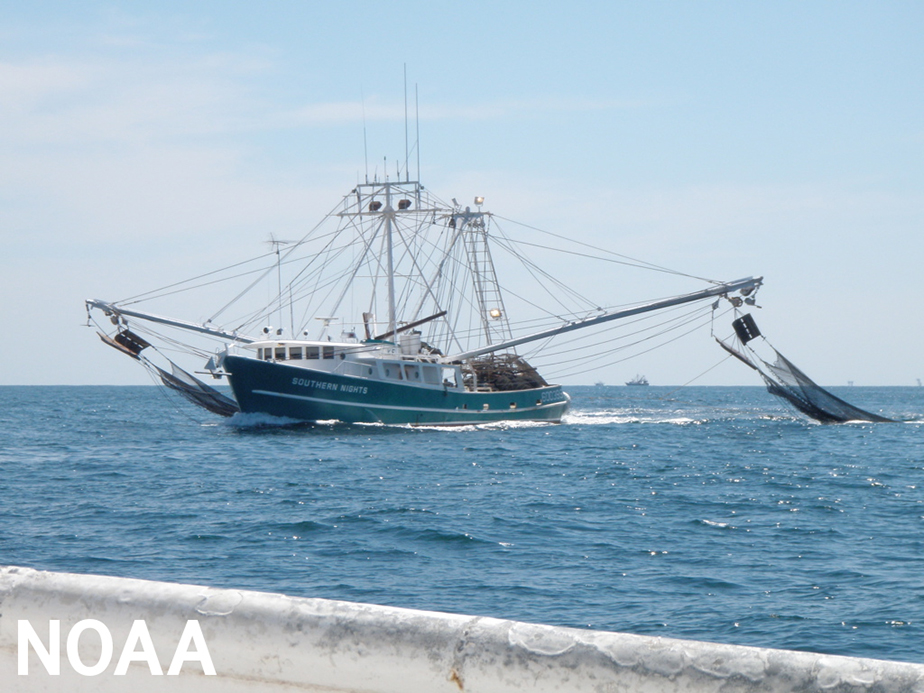
NOAA is forecasting a summer “dead zone” in the Gulf of Mexico that will cover approximately 4,155 square miles, making it below the 5,364 square mile average over the 36-year history of dead zone measurements in the region. The dead zone, or hypoxic area, is an area of low oxygen that can kill fish and other marine life. It occurs every summer and is primarily a result of excess nutrient pollution from human activities in cities and farm areas throughout the Mississippi River watershed.
The U.S. Geological Survey (USGS) provides Mississippi River discharge and nutrient loading data for the month of May, both key factors used to estimate the size of the Gulf’s dead zone during the summer. In May 2023, discharge in the Mississippi and Atchafalaya rivers was about 33% below the long-term average between 1980 and 2022, and the nitrate and phosphorus loads were about 42% and 5% below the long-term averages, respectively.
When the excess nutrients reach the Gulf, they stimulate an overgrowth of algae, which eventually die and decompose, depleting oxygen in the water as they sink to the bottom. The resulting low oxygen levels near the bottom of the Gulf cannot support most marine life. Fish and shrimp often leave the area, but animals that are unable to swim or move away, like clams and burrowing crabs, can be stressed or killed, especially when low oxygen conditions persist.

The Mississippi River watershed, which encompasses over 40% of the continental U.S and crosses 22 state boundaries, is made up of farms (yellow), cities (red) and natural lands (green). Nitrogen and phosphorus pollution in runoff and discharges from agricultural and urban areas are the major contributors to the annual summer hypoxic dead zone in the Gulf of Mexico (gray). (Image credit: USGS)
“NOAA hypoxia forecasts aim to provide coastal managers and stakeholders with the information they need to take proactive action to mitigate the impacts of hypoxic events,” said Nicole LeBoeuf, Assistant Administrator of NOAA’s National Ocean Service. “These forecasts also help managers set nutrient reduction targets necessary to reduce the frequency and magnitude of future dead zones.”
This is the sixth year NOAA has produced a dead zone forecast using a suite of models jointly developed by the agency and its partners — teams of researchers at the University of Michiganoffsite link, Louisiana State Universityoffsite link, William & Mary’s Virginia Institute of Marine Scienceoffsite link, North Carolina State Universityoffsite link and Dalhousie Universityoffsite link. NOAA integrates the results of these multiple models into an aggregate “ensemble” model forecast, which is released in coordination with these external groups, some of whom are also developing independent forecasts.
USGS measures river discharge and nutrient levels using more than 3,500 real-time streamgages, 73 real-time nitrate sensors and 37 long-term monitoring sites in rivers throughout the Mississippi-Atchafalaya watershed. These data are used to track long-term changes in nutrient inputs to the Gulf and to build models of nutrient sources and hotspots within the watershed.
“USGS monitoring of the Mississippi-Atchafalaya watershed provides valuable information on where sources contribute nutrients across the watershed,” said Don Cline, Associate Director for the USGS Water Mission Area. “This information can help guide management approaches to reducing nutrients in local rivers and ultimately in the Gulf.”
The Interagency Mississippi River and Gulf of Mexico Hypoxia Task Force has set a long-term goal of reducing the dead zone to 1,900 square miles by 2035. NOAA’s hypoxia forecast models and USGS monitoring of nutrients and water discharge in rivers help to predict how hypoxia in the Gulf of Mexico is linked to nutrients coming from throughout the Mississippi River Basin. The Task Force in turn uses the information these two agencies produce to inform nutrient reduction targets across the Mississippi watershed statesoffsite link.
“With new investments from the Bipartisan Infrastructure Law, the Hypoxia Task Force is taking action to accelerate nutrient load reductions from the Mississippi River Basin and reduce the size of the hypoxic zone,” said Brian Frazer, director of the U.S. Environmental Protection Agency Office of Wetlands, Oceans, and Watersheds. “Together the Task Force will continue to tackle the challenge of Gulf Hypoxia. This annual forecast is a key metric that informs our collective efforts.”
To confirm the size of the hypoxic zone and refine the forecast models, a NOAA-supported monitoring survey is conducted each summer, with results released in early August. NOAA and its partners continue to develop additional hypoxia forecasting capabilities and tools to understand impacts on living marine resources under various nutrient reduction actions, including a new experimental model from scientists at NOAA Fisheries and North Carolina State University to better understand where shrimp could be found relative to the hypoxic zone.
NOAA


Bulloch Public Safety
06/12/2025 Booking Report for Bulloch County

Chattooga Schools
Small Towns Grow Big Ideas: A Scientist’s Journey from Chattooga to Duke

Chattooga Local News
Mr. Christopher “DJ” Chapman Obituary

Bulloch Public Safety
05/27/2025 Booking Report for Bulloch County

Bulloch Public Safety
06/09/2025 Booking Report for Bulloch County

Bulloch Public Safety
06/02/2025 Booking Report for Bulloch County

Bulloch Public Safety
05/19/2025 Booking Report for Bulloch County

Bulloch Public Safety
05/16/2025 Booking Report for Bulloch County







